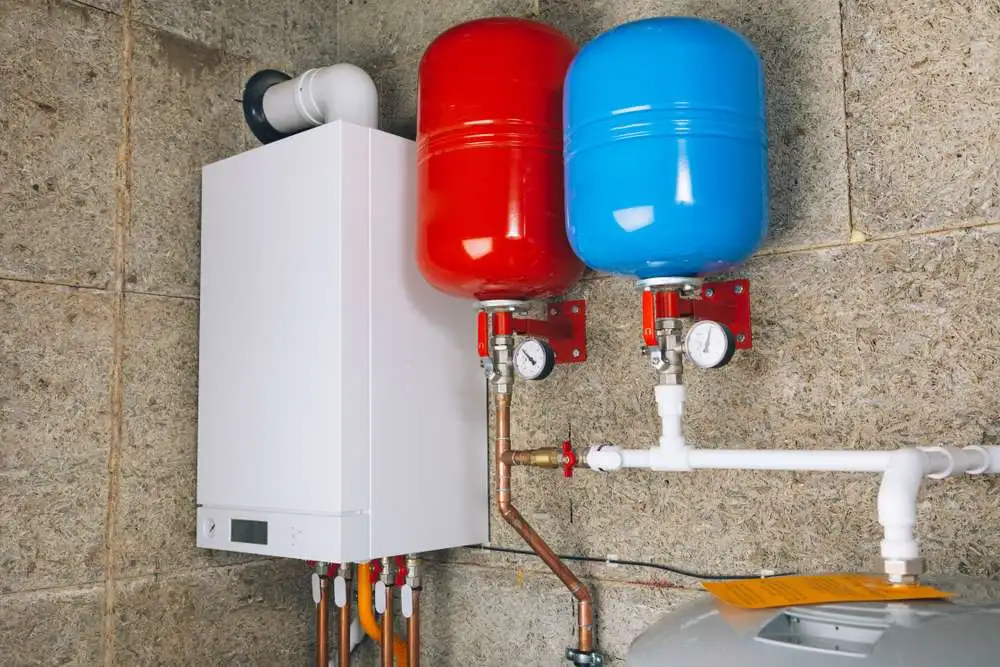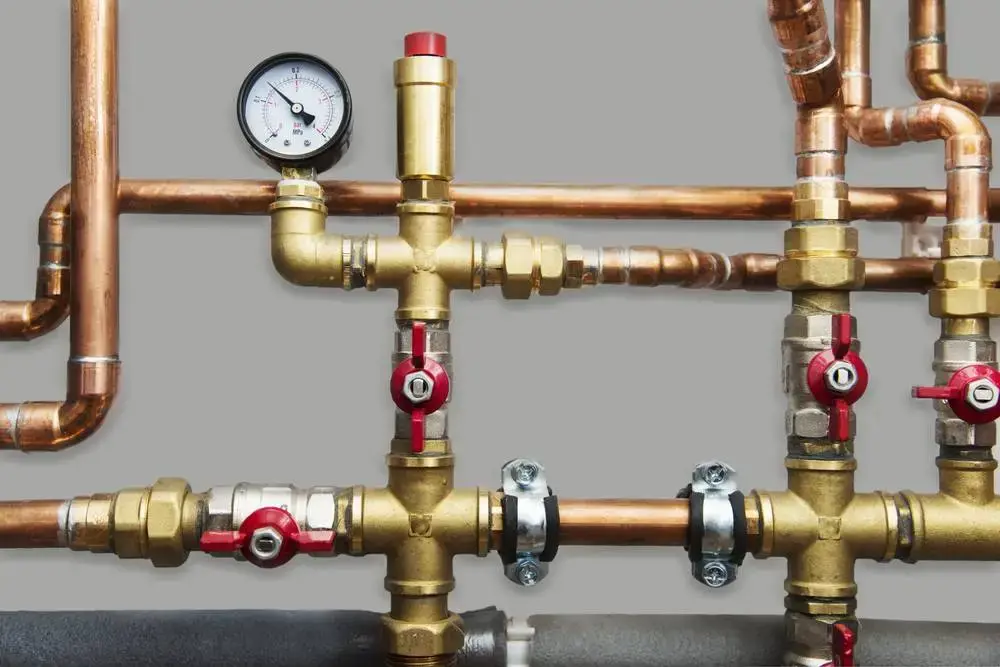Our hot water return system designs ensure you have a reliable supply of hot water from all fixtures all the time
We pride ourselves on designing reticulation systems that are energy efficient, save water, and cost less to run.
All our hot water systems are designed and built to last using the best quality materials and cutting-edge technology.

We need an adequate supply of hot water in our homes, establishments for lease and rental, and commercial buildings. Furthermore, they need to be energy efficient and fully functional to meet the needs of whoever is going to use them. Even though recirculation systems save water, they should not be allowed to run constantly otherwise they will increase energy consumption. Instead, we prefer to design hot water return systems that are controlled. Our engineers ensure you have a reliable supply of hot water from all fixtures all the time with our hot water return system designs.
We are one of the fastest growing MEP design firms in the construction industry. We pride ourselves on having a fast turnaround while providing cost effective solutions. We are licensed in 50 states and are your one stop shop for all MEP design needs.
We are licensed in all 50 states!
We design to the perfection
Enjoy our lightening fast turnaround
We have completed so far!
Our designs are approved by DOB in one go
The best service experience in the market
We need an adequate supply of hot water in our homes, establishments for lease and rental, and commercial buildings. Furthermore, they need to be energy efficient and fully functional to meet the needs of whoever is going to use them.
In addition to the fact that there are various different types of storage type water heaters, there are different ways that engineers design hot water systems. Early types relied on natural circulation that did not rely on any sort of pump. It stands to reason that they were lower in energy costs and also very quiet. However, this type of system didn’t work well in large networks when major temperature drops were experienced.
Another option was to have a centralized system where water was heated and stored using a boiler or furnace.
Still common today, centralized systems may be direct or indirect and may rely on:
Indirect heating systems circulate via a heat exchanger.
Even though recirculation systems save water, they should not be allowed to run constantly otherwise they will increase energy consumption. Instead, we prefer to design hot water return systems that are controlled.

Well-designed water distribution systems can help to conserve energy. Simple factors that help include using shorter pipe lengths and smaller diameter pipe, as well as reducing flow but increasing flow rates, which will all help to reduce the length of time it takes for hot water to get to a fixture or appliance.
In addition to both environmental and cost benefits, our MEP engineers recommend these long-term solutions:

Hot water recirculation systems move water in a loop throughout the home, with pipes passing from the water heater (or heaters) close to plumbing fixtures and appliances. Then, when hot water is needed, it is released by a sensor or via a valve and takes just seconds to reach the required temperature. This can drastically reduce water waste and the time one has to wait for hot water.
There are different types of hot water recirculation systems including what may be described as dedicated and integrated loops, some of which are more energy efficient than others. Most are designed to connect water heaters and fixtures that are about 80 to 100 feet (25 to 30 m) apart.
In a dedicated loop, a circulation pump is mounted on a pipe connected to the water heater. The water is then constantly pumped past fixtures and appliances until a valve is opened at that point. Because it is kept continuously hot, hot water is literally available on demand at any time. However, when a recirculation system pumps continuously it can potentially use significantly more energy. Additionally, if hot water pipes and water heaters are not properly insulated they will lose heat as well, increasing energy costs.
In what amounts to an integrated loop that runs through the cold water line, the pump is installed beneath the fixture that is farthest from the water heater and relies on “demand controls” to sense when the water temperature needs to be increased. Commonly activated by a thermostat or timer, a sensor controls the pump when the temperature drops below and reaches a certain heat. This may be anything from 85 °F to 95 °F or a larger range from 77 °F to 104 °F. Because the hot water is re-circulated intermittently, it is a more energy efficient system, reducing water heating bills as well as electricity costs for pumping the water.
Water heating is responsible for a fifth of the energy used in most buildings with old boilers and dated distribution systems accounting for huge amounts of wasted energy.
An efficient hot water return system or recirculation system not only saves water and energy, but it also saves time, increases the convenience factor for consumers, and improves reliability. But, as mentioned above, integrated loops with demand controls are considerably more energy efficient than dedicated loops that circulate constantly.
According to the U.S. Department of Energy every year as much as 1.3 trillion gallons of water is wasted by households waiting for cold water to heat up. At the same time, as much as 1,600 kWh is wasted in the U.S. every year as a result of municipalities pumping water to homes that will simply drain out of the system while householders wait for the water to heat to the desired temperature. The water simply washes down the drain!
Demand hot water recirculating systems follow a very similar process to that followed when we turn on a hot water faucet. However, instead of allowing the water to run down the drain until it gets hot (or at least warm enough to be of use), it is returned to the water heater. When it reaches a pre-set temperature, a control switches the pump off and we have hot water to use. It’s easy to see how this saves both water and energy!
By keeping domestic hot water pipes in relatively short runs, we are able to save even more water in a well designed hot water return system.
Both the New York City (NYC) Plumbing Code 2014 and the Plumbing Code 2015 of New York State, which is based on the International Plumbing Code (IPC) contain specifications for hot water supply systems including hot water recirculating systems. Both are similar but not exactly the same, but read together they provide invaluable guidelines for engineers. In general, the IPC has more data that relates to circulating systems and demand recirculation controls for hot water return systems.
In essence, hot or tempered water may be supplied to fixtures that utilize hot water and both heat-traced piping and recirculating system piping are considered to be sources of both.
When thermostatic mixing valves are used in systems that incorporate hot water recirculating pumps, the hot or tempered water is routed back to the:
In general terms, the installation of heated water circulation systems is done in accordance with the International Energy Conservation Code (IECC), following different sections depending on the height of the building.
If demand recirculation systems have more than one pump, it is mandatory that a demand recirculation water system is used. Furthermore, controls are required to start the pump automatically when the fixture or appliance senses the flow of hot or tempered water, and controls must limit the temperature of the water in the cold water pipes to no more than 104 °F (40 °C).
When master thermostatic valves are incorporated in the piping of recirculation systems, the hot or tempered water return line must be routed as described above.
Another important factor is that if cold water is supplied to a storage water heater, and the water passes through either a pressure reducing valve, a check valve or a backflow preventer, it is essential to include a thermal expansion tank in the hot water system. This should be correctly sized and connected to the heater’s supply pipe downstream of any valves.
It is also essential for all faucets, diverters, and fixture fittings to be installed so the flow of hot water is on the left.
The International Energy Conservation Code (IECC) published in November 2017 establishes a baseline for energy efficiency for the building envelope, mechanical systems, and lighting and service water heating systems in both residential and commercial buildings.
Heated water circulation and temperature maintenance systems in residential buildings are mandatory and all headed circulation systems must be provided with a pump with automatic controls. As above, controls for demand recirculation water systems need to both start the pump when it receives a signal from the fixture or appliance and limit the temperature to no more than 104 °F (40 °C) when it enters the cold water pipe. Controls for heat trace systems must be adjusted automatically to maintain the water temperature in the pipes at the desired temperature.
Manual and automatic controls are permitted for commercial heated-water circulation and temperature maintenance systems. Circulation systems that heat water must have a pump and return pipes may be cold water supply or dedicated return pipes. Thermo-syphon and gravity systems are not permitted. Demand recirculation controls for commercial environments have the same requirements as those used in homes.
The NYC Energy Code 2014 requires that all circulating hot water systems must be insulated to at least R-2, which is a minimum value for residential insulation. Additionally, circulating hot water systems must include either an automatic switch or a manual switch that is readily accessible to turn off the pump when the hot water circulating system is not in use.
The Code requires commercial properties with circulating hot water system pumps or heat trace to be installed so that they can also either turn off automatically or be switched off manually if the demand for hot water is limited. The same applies to water heaters. Unless public health standards demand a 24-hour pump operation, time switches or some other method of control must be incorporated so that pumps, heaters, and motors can be preset and/or turned on and off automatically.
While hot water has a real role to play in terms of human comfort, the term “service water heating” refers to the supply of hot water for purposes that do not imply or relate to comfort heating. Various mechanical heating systems and elements of plumbing including pipe insulation, incorporation of valves, process water pumping, and mixing systems come into play.
The IgCC, originally released in 2010 and most recently updated in October 2018, focuses on environmental health and safety for sustainable, resilient, high-performance buildings. The motivation for the Code lies largely in the fact that buildings account for more than 12% of the use of water, more than 70% of the consumption of electricity, 40% of CO2emissions, and 65% of all output of waste. By embracing “green” strategies in the building industry worldwide
While coordinated with other codes including the IECC, the IgCC is not exactly the same and its impacts are not just limited water, electricity and so on. The Code also focuses on developing better indoor environments as a whole, better neighborhoods with improved walkability, and ultimately a lower impact on natural resources as a whole.
We value our role in making the world a better place!
382 NE 191st St , Suite 49674
Miami, Florida 33179276 5th Avenue, Suite 704 #904
New York, NY 10001